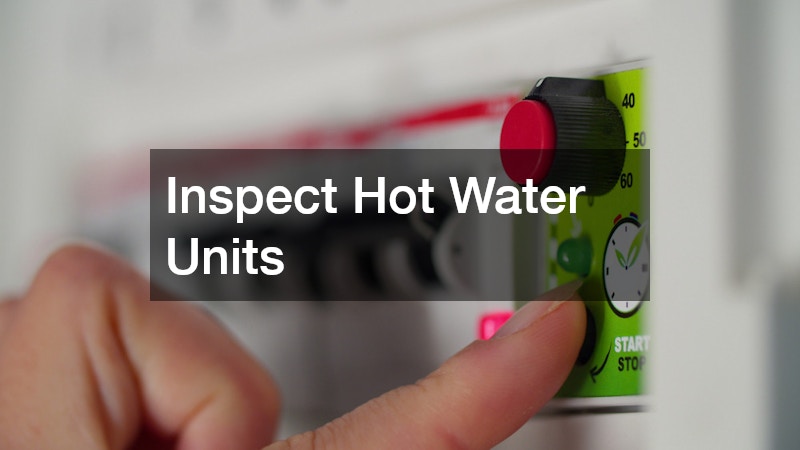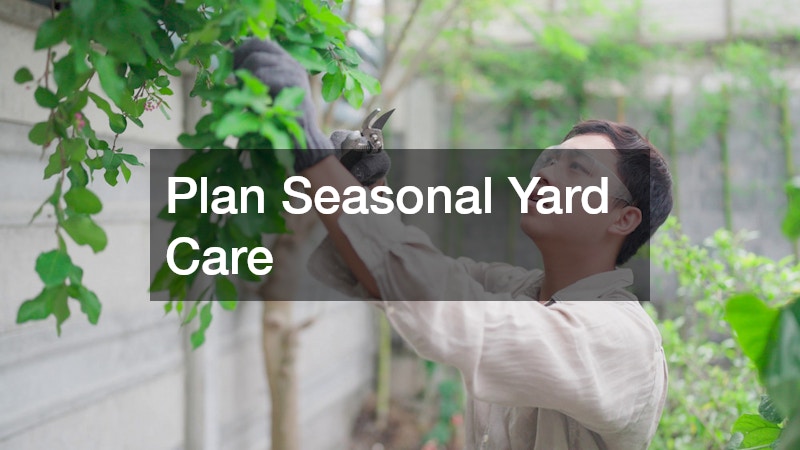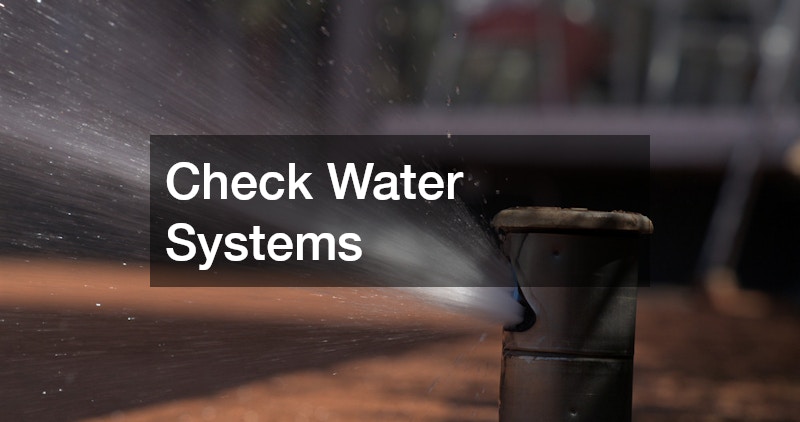As summer winds down and cooler weather approaches, many homeowners begin thinking about the steps needed to protect both their living spaces and outdoor areas for the coming season. Preparing for winter isn’t just about staying warm inside—it’s about taking proactive measures throughout your property to prevent costly repairs and ensure comfort. When done correctly, home and lawn winterization can provide peace of mind, knowing that every system, surface, and space has been readied for freezing temperatures, excess moisture, and reduced daylight hours. This preparation ultimately helps extend the life of your home’s infrastructure and keeps your lawn and landscape in healthy condition until spring arrives.
The key to effective preparation lies in covering all bases, from heating and plumbing inside the home to roof care, yard cleanup, and pest prevention outdoors. Every element of your property is connected, and when one part is neglected, it can create a chain reaction of issues that become much harder to resolve once the cold sets in. A careful, step-by-step approach ensures that you protect not only your home’s comfort but also its long-term value. Winter weather brings unique challenges such as frozen pipes, clogged gutters, weakened roofs, and dormant lawns, all of which require strategic solutions.
This guide outlines ten expert tips that address these common concerns and more, giving you a comprehensive plan to safeguard your home and yard. Each section focuses on a different area of preparation, starting with heating systems and ending with soil health. Along the way, you’ll learn how to keep your water systems running smoothly, prevent pests from settling in, and set your lawn up for strong regrowth once the snow melts. Together, these measures provide a complete framework for protecting your property during the 2025 winter season.
1. Prep Heating Systems

When temperatures begin to drop, ensuring that your home’s heating system is in optimal condition is one of the most important steps you can take. A reliable and efficient heating setup not only keeps your living spaces comfortable but also helps reduce energy costs over the long winter months. Regular upkeep ensures that systems run smoothly, extending their lifespan and minimizing the likelihood of unexpected breakdowns when you need warmth the most. Heating preparation is often overlooked, but it can make the difference between a cozy winter and an expensive repair bill.
Working with an HVAC company allows homeowners to identify issues before they escalate. Professional inspections can uncover hidden inefficiencies such as clogged filters, worn-out components, or outdated thermostats. Technicians can also recommend adjustments that improve overall performance, such as upgrading to smart controls or sealing air leaks in ductwork. These improvements can have a direct impact on both comfort and monthly utility bills. By scheduling service early in the season, you can avoid the rush when temperatures drop and demand for technicians spikes. In the process of home and lawn winterization, properly prepared heating systems ensure that the interior environment remains safe from cold-weather hazards like frozen pipes and excess indoor humidity.
6. Clear Out the Gutters
Gutters are one of the most important systems for protecting a home from water damage, yet they are often neglected during seasonal transitions. When gutters are clogged with leaves, twigs, or dirt, water can overflow and seep into walls, foundations, and landscaping. As winter approaches, these blockages can also lead to the formation of ice dams, which cause significant structural problems. Keeping gutters clean and functional is a simple step that prevents expensive repairs later.
Local gutter services offer specialized equipment and knowledge to ensure drainage systems are free from buildup and operating correctly. Professionals can also check for loose or damaged sections that might cause leaks when heavy snow or ice accumulates. By addressing these concerns in advance, you can avoid issues that might not be visible until damage has already occurred. Clean and secure gutters guide water away from the home, keeping both the roof and the foundation protected through the coldest months.
7. Inspect Hot Water Units

Few household systems are as vital in cold weather as reliable access to hot water. When temperatures drop, hot water is needed for bathing, cooking, cleaning, and preventing pipes from freezing. A failing or inefficient system during the winter can be more than just inconvenient—it can also compromise comfort and health. Inspecting water heaters before the cold sets in ensures your home is ready for daily demands.
Professional technicians can check water heaters for issues such as sediment buildup, worn heating elements, or thermostat malfunctions. They may recommend flushing the tank, adjusting the temperature, or replacing outdated parts to improve efficiency. These preventive measures help extend the life of the unit and avoid sudden breakdowns. An evaluation also ensures that the system is running safely, a key element of home and lawn winterization.
8. Address Plumbing Needs
Plumbing systems are especially vulnerable to freezing temperatures, and even a small issue can escalate quickly once the weather turns. Frozen pipes can burst, leading to major water damage and expensive emergency repairs. Taking time to assess plumbing in advance ensures that every part of the system is ready to handle winter’s challenges. Preventive action is always less disruptive than addressing a crisis after it happens.
Hiring a plumber to evaluate your home’s setup can reveal weak points you may not notice. They can insulate exposed pipes, seal leaks, and check for hidden problems such as slow drains or minor leaks. These small improvements significantly reduce the risk of a larger breakdown and is an integral part of home and lawn winterization. Professional attention ensures that your plumbing is winter-ready, giving you confidence when temperatures plunge.
9. Prevent Seasonal Pests
As the weather cools, many pests seek warmth and shelter inside homes and garages. Rodents, insects, and other unwanted visitors can cause damage, spread allergens, and contaminate food supplies. Preventing infestations before they happen is far easier than dealing with them after they occur. By taking proactive measures, you can keep your home safe and sanitary during the colder months.
Within the scope of home and lawn winterization, calling a pest control service ties directly into the safety and comfort of your living space. A pest-free home means fewer distractions from other winterization tasks and avoids the health risks associated with infestations. This step ensures your property remains both protected and livable throughout the winter season.
10. Boost Soil Nutrition
Lawns and gardens enter a dormant stage during the winter, but their health in the coming spring depends on the care given in the fall. Soil that is well-nourished before the cold sets in will provide the necessary nutrients for strong regrowth. Neglecting soil preparation, however, can result in patchy grass, weak plants, and erosion once the thaw begins. Boosting soil nutrition is one of the final but most important steps of preparing your yard.
A lawn fertilizing service can deliver customized treatments designed to strengthen roots and replenish depleted nutrients. Fertilizers applied at the right time provide long-lasting benefits that extend into spring. Professionals can test soil conditions and choose the best formulas for your property, ensuring your lawn receives the care it needs to stay resilient.
Preparing your property for colder weather requires more than just a few last-minute tasks. It is a comprehensive process that touches nearly every part of your home and yard. By addressing heating systems, roof care, yard planning, lawn upkeep, water system checks, gutter cleaning, hot water units, plumbing protection, pest prevention, and soil nutrition, you create a strong framework for seasonal readiness. These ten steps form a practical guide to protecting your property and ensuring it weathers the season without costly setbacks.
The benefits of taking these steps of home and lawn winterization extend far beyond the immediate season. Proactive care reduces the risk of emergencies, lowers long-term maintenance costs, and helps preserve the overall value of your property. It also provides peace of mind, knowing that both your home and outdoor spaces are ready to handle whatever winter may bring. By planning ahead and committing to these essential tips, you can transition into the colder months with confidence.


